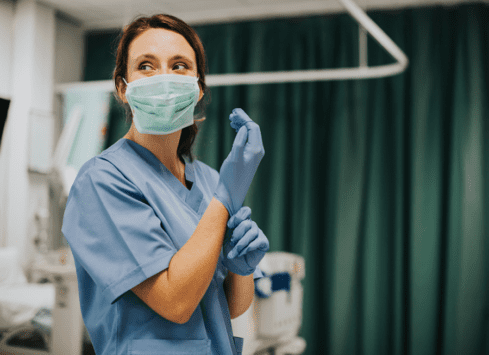Novel Coronavirus COVID-19: Hospital Foodservice Best Practices
Healthcare workers around the U.S. are banding together to fight a global pandemic. As the virus continues to spread, hospitals are enacting restrictions and limiting in-person contact for both the safety of patients and staff.
As the country continues to implement strategies to slow the spread of the novel coronavirus COVID-19, we must all do our best to keep our communities and patients safe. As a result, Morrison Healthcare is sharing our best practices in the hopes that we can help other healthcare providers and operations.
This information is the cumulation of experience and research from some of the industry’s leading healthcare practitioners.
As part of our efforts, we have pulled together best practices that can guide changes in foodservice to ensure the safety of your teams. These practices are broken into two categories: Foodservice Operations and Communications.
Foodservice operations
There are operational opportunities to provide excellent service, while limiting staff and patient contact. By utilizing these best practices, you can better keep your staff and patients safe, while limiting the spread of the novel coronavirus COVID-19.
Using Regular Dishes
The CDC says that the combination of hot water and detergents in the dishwasher make it safe to use regular dishes for patients with COVID-19. Some hospitals choose to use disposables as a way to preserve the personal protective equipment that would be needed if workers from all departments were providing their usual services. Essential personnel can discard the disposable trays at their convenience.
Pop-Up Hospitals
Pop-up hospitals meet the community’s need, so the list of stakeholders from the participating hospitals can be long. The “clients”, however, are the owners of the space and the federal government. A simple menu, such as the cold-boxed meal menu, allows the flexibility to feed varying numbers of patients in a temporary setting that may be a distance from the actual food production area.
Patient Menu Selections
Taking patient menu selections by phone is a way to limit the number of face-to-face interactions with patients while maintaining quality meal service. Train the associates who will be calling patients. Make it easy for them by providing a script to follow. This ensures that all patients hear the same message. Shadow the associates while they are placing calls, so that those who are clearly uncomfortable talking on the phone can be assigned to other duties.
Repurposed Staff
We are taking social distancing seriously, a decision that affects the role of our Patient Ambassadors. Previously, our Patient Ambassadors would have spent their days visiting with patients and families. As an example, these associates are assigned to duties such as cleaning door handles, handrails and frequently touched surfaces in public areas, as well as time clocks. Some also assist with stocking.
Communications Best Practices
Communication is vital for the health of our patients. In a traditional setting, much of this communication takes place face-to-face. In light of a global pandemic, it is best to limit all non-essential contact. As a result, we have outlined a few areas where foodservice leaders and staff can minimize contact while still delivering the high level of service that is expected.
Increased Communication with Nursing
For foodservice, an open communication line with nursing has always been an important step in patient care. It is even more so in today’s environment. We recommend increasing communication with nursing leaders, potentially with an additional 2-3 calls per day. It’s important to make sure everyone is on the same page and foodservice is meeting the needs of patients. We need to communicate the transition to disposable meal delivery, so they can ensure patients understand the change.
New Processes
We have found success by putting in additional communication processes for when nurses call for meals. Nurses call before they take a patient’s vitals (about 20 minutes before). That allows foodservice tie to deliver the meal while the nurses are still with the patient, and thus conserving PPE. It also ensures the patient receives a hot meal.
Virtual Rounding
Often foodservice and patient experience leaders round on patients. It is best to keep these interactions to a minimum. As a result, we recommend installing a virtual rounding process, which still allows for patient interaction without in-person contact.
Internal Communications
We can minimize contact between employees by limiting regular huddle meetings. This can be solved by finding new ways to communicate with your teams. Distribute newsletters with relevant information. Create huddle calls instead of in-person meetings.
Communication Cards
Create Communication Cards that can be given to patients and nurses. These cards let patients know they will still receive dietarily appropriate meals, but some of the normal foodservice operations will be suspended.
By implementing these best practices, we can still provide the service patients and administrators expect, while doing our part to flatten the curve. Together, we can save lives and slow the spread of the novel coronavirus COVID-19.

For other resources please read the CDC Interim Guidance for Healthcare Facilities.

